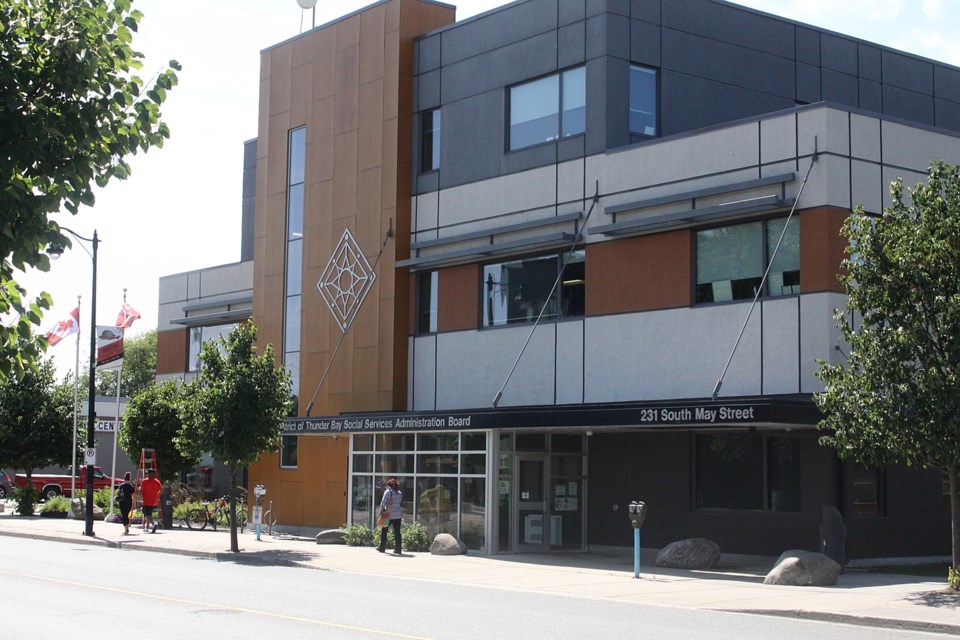THUNDER BAY – A historic increase in homelessness funding for the Thunder Bay district will largely be dedicated to building new supportive housing units.
Roughly 80 per cent of the additional $11 million in homelessness funding the district will receive this year is set to fund those builds, the District of Thunder Bay Social Services Administration Board (DSSAB) has announced.
The remainder will fund smaller increases for services like emergency shelters, outreach, and rent subsidy programs, according to a spending plan released by the DSSAB on Thursday.
The province announced a near-tripling of Homelessness Prevention Program funds for the agency, which allocates provincial homelessness dollars across the Thunder Bay District, back in May.
That means the DSSAB had over $16.5 million to divvy up for programs meant to address homelessness and housing insecurity in its 2023/24 budget, compared to just $5.6 million last year.
Nearly $9 million of that has been dedicated to supportive and transitional housing capital projects, which could include retrofits of existing spaces or new builds.
The agency did not previously receive funds dedicated for capital builds, relying instead on one-time announcements.
Non-profits had until Friday to submit proposals to build housing projects with those dollars through an expression of interest process.
CAO Bill Bradica said he’s hopeful, though not certain, that the expressions of interest will include proposed housing projects in the wider district, where he said the need is acute, if not always as visible.
“We want to start focusing more on the other communities in our district,” he said. “Most of the attention seems to be focused on the city of Thunder Bay, but there are people who are unhoused or precariously housed in the other 14 communities in our district as well. In some cases, it’s a little more difficult – it’s much more hidden typically in smaller communities. It’s important to also focus on that.”
DSSAB leaders have expressed hope the first units could be under construction before the end of 2023 and available as soon as late 2024.
With over 750 people on the DSSAB's "by-name" homelessness list across the district, the agency has estimated at least 250 new supportive housing units are needed to meet demand.
Speaking at an announcement of the funding plan at the agency’s May Street headquarters on Thursday, Mayor Ken Boshcoff, a DSSAB board member, said the new dollars will move the needle on a key community priority.
“This announcement recognizes, in concert with the municipal government, the need for providing that real basic necessity of a roof over someone’s head,” he said.
The DSSAB – one of 47 “service managers” across the province – can spend Homelessness Prevention Program funds across four broad service categories: emergency shelter, supportive housing, housing assistance, and – an option added during the pandemic – community outreach and support services.
For the first time, the DSSAB is now also permitted to use HPP funds towards capital projects to support the creation and renewal of housing and shelters.
While the DSSAB directed most of its new HPP funds toward those capital builds, it will also support smaller expansions in other areas.
That includes additional rent supplement funding, hiring another DSSAB outreach worker, and other outreach supports.
“We’ll be able to connect with more people, and make sure we then have a better sense of who does need housing,” said Bradica.
“It’s going to take time for those spaces to be in operation. In the meantime, we’re excited we can increase the operational funding to continue to help people until more spaces are available.”
The Homelessness Prevention Program funds will also backstop food security programs across the district with around $500,000 that will be open to applications from community groups later this year.
The HPP funding expansion will remain in place for at least three years. While there are no guarantees after that point, Bradica believes the additional support is likely here to stay.
“It’s hard to predict the future, but having a three-year planning allocation is quite significant,” he said. “Much of our funding from various ministries is basically year-to-year.”
“Based on what I know of the new funding formula, I’m relatively confident we’ll continue to receive a pretty high level beyond three years, but of course, it is always subject to annual provincial budget approval.”
